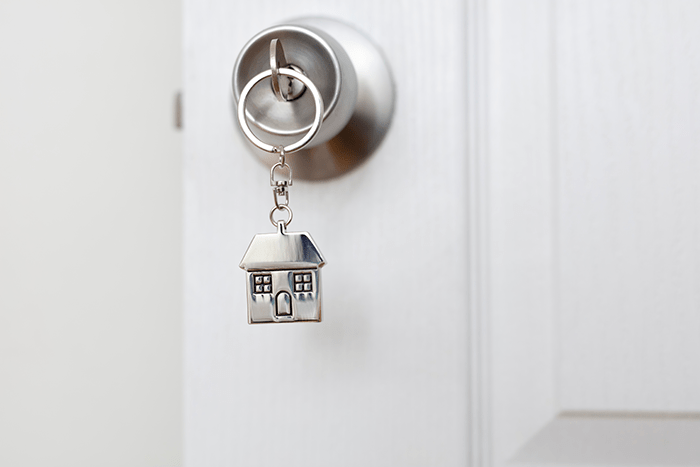For most of us, our mortgage is the largest and most important financial agreement we make. In some cases, peoples overall monthly commitments can become overwhelming, which is why people consider remortgaging their home. In this guide we explore the pros and cons of remortgaging and if it’s right for your circumstances.
As your fixed-rate mortgage ends, you'll move on to the lender's standard variable rate (SVR).
The period before this happens may be the perfect time to see if you could save some money by switching to a new deal. A competitive market means you may be able to find a lender that can offer you a better deal and more flexibility on repayments. But to ensure a smooth transition, you may need to start the process sooner.

In the guide below, you’ll find out when to remortgage so you can prepare yourself to make the best move when the time is right.
What you’ll learn:
- What is a remortgage?
- Should I remortgage?
- When should I not remortgage?
- When is the right time to remortgage?
- Are remortgages different from mortgages?
- When is a good time to look for a remortgage deal?
- Can I remortgage with the same lender?
- Why go to a new lender for a mortgage?
- How often can I remortgage?
- How does remortgaging your home work?
- Can I remortgage to buy a second home?
- What do I need to consider when remortgaging my house to buy another?
- How to remortgage to buy a second home
- Top considerations to make before remortgaging
- Different types of remortgage products
- What is a second charge mortgage?
- Remortgaging with bad credit
- Five reasons remortgaging can save you money
- Is remortgaging worth it?
- FAQs
What is a remortgage?

Remortgaging is agreeing new payment terms for your current home with a lender, from either a new one or with your current provider. By replacing your terms with a new arrangement, you could reduce your monthly payment or free up a lump sum for use elsewhere. Homeowners remortgage for a variety of reasons, including:
- to release equity as money to use on a second property
- to finance home repairs and renovations
- to consolidate debt.
Should I remortgage?
If you’ve been making your mortgage payments for several years, you may have paid down much of your original agreement and seen an increase in the overall value of your home. In this situation, agreeing new terms with a lender could reduce your remaining monthly payments or free up equity in exchange for a lump sum.
In this case, you’d be agreeing to give up some of your equity for immediate funds, borrowing against the value of your home again.
The potential value of a lump sum payment depends on whether your home has increased in market value since the original purchase, and by how much you’ve increased your equity as part of your initial mortgage plan.
Your property’s equity is equal to the current value of your home, minus the amount you have paid off on your original mortgage. You can then use this figure to calculate your loan-to-value rate (LTV). Having a low LTV means you could secure a new agreement with lower interest or monthly payments, saving you money over the course of your repayment plan.
Though there are several potential benefits to remortgaging, it isn’t always for everyone, and any outcomes depend on your current financial situation.
When should I not remortgage?
If you’ve seen a decrease in the value of your home or haven’t repaid much of your mortgage value since the initial purchase – if you’re on an interest-only plan, for example – remortgaging could in fact raise your monthly repayments.
Just as it was on your initial mortgage application, remortgage offers are also dependent on your current financial situation. New lenders will consider your salary, employment status and credit score.
So, if your circumstances have changed for the worse since you first purchased your home, you’re unlikely to secure better terms than you have now.
When is the right time to remortgage?
The following factors will help you decide when it’s time to remortgage:
At the end of your fixed term mortgage
If you have a fixed-term mortgage, you should consider remortgaging when you get to the end of the fixed period. Otherwise, you may have to start paying more when this rate ends, and you’re moved to the SVR. Keep in mind you will usually have to pay early repayment charges if you wish to remortgage before your fixed term ends.
Getting a better remortgage interest rate
Mortgage rates frequently change as the Bank of England's base rate fluctuates. For this reason, remortgaging could give you a better deal, lower interest rates and cheaper monthly repayments if it’s been a long time since you bought your home.
You could save a lot of money if you enter a new fixed-term mortgage on a lower interest rate. If your current mortgage is a special fixed deal, you may be subject to early repayment charges for leaving before the term ends.
You have a good LTV ratio
Loan-to-value ratio (LTV) is made up of the amount of your home you have paid for (equity) in comparison to your mortgage loan. The more equity you have in your property, or if the value of your house has increased, the better a remortgage deal you could secure.
Your situation has changed, and you need more flexibility
Circumstances change, so the mortgage you took out when you bought your home may no longer be right for you. Remortgaging gives you the chance to opt for a more flexible mortgage deal that meets your requirements better.
Are remortgages different from mortgages?
Remortgages are effectively just the same as regular mortgages. They are a means of agreeing new repayment terms on your property. A remortgage deal offers you the chance to release some of your accumulated equity in return for a financial lump sum.
When is a good time to look for a remortgage deal?
The best time to start looking for a remortgage deal is around three months before your fixed term ends. Make sure you give yourself plenty of time to shop around to check the other rates on offer. You’ll want to avoid moving to the SVR as this will invariably be higher than the fixed rate you were paying — this means more of your money goes on the balance (what you owe) rather than the fees on top.
Should I remortgage before my current deal ends?
If you move before the end of your current fixed-term deal, you might end up paying a lot in early repayment charges and exit fees. To avoid this, arrange for your new mortgage to start as your current one ends.
Can I remortgage with the same lender?
Yes, it’s possible to switch mortgages and stay with the same lender. Talking to your current lender before your rate is about to change to their SVR could save you time. They'll want to keep your business and can help you figure out which product you can afford and for how long. You’ll also reduce the amount of admin you’d have to do if going elsewhere, which could save on extra fees.
Why go to a new lender for a mortgage?
While it's possible to remortgage with your current lender, you might find that others offer lower rates. If that’s the case, it won’t hurt to shop around in search of the best deal. If you can save money, then it is worth choosing a new lender. Some lenders offer products with free legal services and free valuations so only minimal fees are incurred.
How often can I remortgage?
You can remortgage every time your fixed term ends. These introductory rates could last anywhere from two-to-10 years. It’s best to stick you’re your provider during the fixed terms to avoid any extra costs.
How does remortgaging your home work?
Remortgaging your home works by switching to a new mortgage on your existing home. There are two ways you can remortgage your home:
- Swap to a new mortgage deal for a lower loan-to-value rate.
- Borrow more money by increasing the balance of your mortgage.
Read our guide to the remortgaging process for more information.
Can I remortgage to buy a second home?
Providing you meet the requirements, refinancing your home can help to raise the capital needed to buy a second property.
You may want a second home for a relaxing getaway. It could also be an opportunity for investment, as you can use the second property as an asset to receive passive income.

You'll need to show your lender that you can pay back the mortgage, plus any debt on the new house. It’s important to ensure you’re in a position to repay what you borrow. Use our calculator to check how much you might be able to borrow.
What do I need to consider when remortgaging my house to buy another?
It is important to take the time to fully consider the following before making any decisions. Talking to a broker can help as they offer expert advice throughout the process.
Property type and intention
The type of property you want to buy can be a deciding factor when looking at the type of product you need. The main property types include:
- Let to buy properties – Letting out your current home so that you can buy another property.
- Buy to lets – Raising capital on your current property to finance and rent out another property purchase.
- Holiday lets – Renting out on a short-term basis to holidaymakers.
- Holiday home and second homes – Buying a second home as a holiday getaway.
- Commercial property – A property leased out to businesses for commercial use.
Personal circumstances
Your current personal circumstances also impact your potential remortgaging deals. Lenders will take a look at:
- Employment – Lenders generally favour those in full-time employment, but some specialise in helping self-employed or contract workers.
- Income – How much you can borrow will be dependent on how much you earn. The higher your salary, the more you should be able to borrow.
- Credit – Your credit score will determine if you are eligible to qualify for remortgaging a property to buy another. Those with an adverse credit history will be negatively affected. Current loans and outstanding credit card debt is also considered.
Extra fees
As with standard mortgages, there are extra costs to consider. These include:
- Stamp duty – This is a government tax placed on property purchases. The amount will depend on the value of the property itself.
- Mortgage fees – Most products have arrangement and booking fees. There are usually valuation and conveyancing fees too although some lenders do offer fees-free products.
How to remortgage to buy a second home
You may wish to remortgage your house to buy another property with your current lender by applying for a second mortgage with them. You can also split this amongst two different lenders. Here are the steps you need to take:

1. Calculate equity
You can calculate the equity on your property by deducting your current outstanding mortgage amount from the current value of your property.
So, if you had a property with a market value of £300,000 and your mortgage balance was £208,000, your equity would be £92,000.
To find out your home’s market value, you can get a house valuation and look at recent sales in your area. If your house has increased in value since you bought it, this difference can contribute towards remortgaging to buy a second home.
2. How much to borrow?
It’s important to consider the loan-to-value ratio (LTV). This is the balance of your mortgage as a percentage of the property’s total value.
For example, if your home is worth £200,000 and your mortgage is £140,000, your current loan-to-value ratio is 70%. This means you have £60,000 equity on your property.
Most lenders will only lend up to a maximum % of the £60,000 equity in your property, as a remortgage to buy a second property. Contact a mortgage broker for further details.
3. Consult a broker
Mortgage advisors are independent parties that act as an intermediary. They are specialists who have in-depth knowledge of the sector and can advise you on the right deal. They can often identify areas which may be difficult to spot. Please note that using a mortgage broker may incur a cost but free consultations are also available.
Top considerations to make before remortgaging
Whether you’re looking to increase your borrowing with your current lender or to switch to another mortgage company with a better deal, here are our top 10 considerations to make before remortgaging your home:
1. Decide whether to improve or move
Liberating cash to invest in home improvements can be a great idea, but it’s best to figure out your future plans first. If you are investing in your home to increase its value for selling, do your homework before you apply to make sure it’s financially beneficial.
Get reliable estimates for everything, including architect’s plans and building regulation inspections, and draw up a realistic budget. You should also estimate how much these renovations could improve the value of your home against what you plan to spend on them.
2. Find out the true value of your home
Many of us get regular updates from property sites showing the value of our homes shooting up. But remember that these are average estimated figures. Don’t assume that your lender will offer you up to the value of these new estimates – as they will use their own valuation.
Instead, you can organise your own valuation. Ask one or two estate agents to value your home as it stands, and the potential value after you have added an extension or home improvement. If your home is worth more now than when you originally took out your mortgage, you may be able to remortgage at a lower loan-to-value rate.
3. See if it does pay to switch
If you’re thinking of switching to a new mortgage, keep an eye out for the expiry date on your fixed term mortgage, if you have one. If you don’t switch before that happens, you’re likely to be put on to the lender’s Standard Variable Rate (SVR) – which may not be the most competitive option.
4. Compare what’s out there
The mortgage world is a bewildering jungle of different products, so before you pick a new provider, have a look through a comparison site.
It may be tempting to stay with your current lender to save yourself time and effort shopping around. However, studies show 60% of UK lenders charge their existing customers higher rates than those switching from a different lender. So, you could save hundreds of pounds a year just by switching providers.
5. Work out the exit fees
Before changing mortgage providers, look carefully at your existing lender’s exit fees and any other charges that may apply. There’s no such thing as a free mortgage switch – but it may still be the most advantageous option.
Some lenders will charge admin fees for any contractual changes, including booking, valuation and conveyancing costs.
The easiest way to work out if switching providers will save you money is to calculate how much you’ll save in interest over the course of your new loan terms, minus any set up fees, against what you’ll pay in exit fees now.
6. Ask first
Staying with your existing provider but choosing a different mortgage from them may work out to be the best and easiest option. This means you’ll avoid being placed on a Standard Variable Rate (SVR) and you may also save on potential charges for leaving your current lender.
However, you should still shop around to make sure staying put is the best option.
7. Consider the application fees
As well as paying to leave your current mortgage, there’s also likely to be a cost involved in applying for a new one – and sometimes these vary based on the value of your home. There are some fee-free mortgage deals, but they are likely to have slightly higher interest rates.
8. Dedicate time to your remortgage
Set aside some time to properly research and compare your options for remortgaging ahead of your current deal ending. This will just help ensure that you’re getting the best deal possible.
If this means switching providers, be prepared to spend a lot of time on the phone too – there will be lots to sort out and you’ll be dealing with two lenders. In some ways, switching mortgages is more complex than arranging one in the first place, but just keep thinking about the money you may save in the long run.
9. Make sure any additional products offered are right for you
When you’re approaching lenders about remortgaging, they may try to sell you all kinds of products, from payment protection to buildings insurance. This is usually to help the lender make money elsewhere, especially if they are offering you competitive rates or loan terms.
All of these are available (and possibly cheaper) from other suppliers and you don’t have to buy one linked to your mortgage. Make sure you get the right products for your requirements.
10. Consider all the implications of remortgaging to repay debts
Remortgaging to pay off debts may seem like a good option, as the interest rates offered are usually lower than other types of loans. But be warned – a mortgage is still a loan, albeit over a longer term.
Consolidating your debts into one single, monthly payment can make them easier to manage and potentially more affordable. However, repaying debt in this way can sometimes take longer and could cost more in the long run if you extend the term of your existing debts.
Remortgaging can be highly beneficial in saving you money or achieving your home renovation dreams. However, like with any loan, it’s always best to consider all your options and work out the overall costs of switching before taking the plunge.
Different types of remortgage products
There are many remortgage products on the market, designed for different needs and requirements, including:
Fixed-rate mortgages – These are an agreement between you and the lender to pay back at a defined rate over a set period.
Tracker mortgages – These repayment plans track the Bank of England’s base rates, meaning that you could pay more or less interest over time, dependent on market fluctuations.
Variable-rate mortgages – These are like tracker mortgages, but the interest rate is set individually by the lender. Rates are typically around 2% higher than the Bank of England’s base figure.
Capped or Collared mortgages – Again, the interest on these mortgages fluctuates with the market, but have defined floor and ceiling rates, meaning you’ll never pay more or less than the agreed figures.
Discount mortgages – These will typically start at a decreased rate for the first few years before reverting to terms similar to tracker or variable-rate mortgages.
Flexible mortgages – These allow for a borrower to overpay or underpay on the agreed amount, but interest tends to be higher than other products.
With so much to consider, it’s worth speaking to a broker, like Norton Finance, who’ll be able to advise you on whether remortgaging is for you. Discover more around remortgages here.
What is a second charge mortgage?
A second charge mortgage works similarly to a secured loan, taken against the homeowner’s property. Typically, homeowners will use second charge mortgages to access funds quickly, rather than agree on new payment terms with a lender.
By releasing equity in your property as money, you’ll effectively be taking out a second mortgage on your home. You can release any funds over £1,000 in this manner, but you will have to pay back the borrowed amount as well as your current mortgage arrangement. Your home acts as the collateral in the agreement, so you could lose it if you fail to pay back the value of your second charge mortgage.
A second charge mortgage can sometimes be cheaper than remortgaging, as you won’t pay any exit fees or early repayment charges. You’ll still owe your current mortgage total. You’ll also need to pay off the second charge mortgage fully should you decide to move to a new property.
Is a second charge mortgage right for me?
A second charge mortgage could be right for you if you have a low credit rating, or if you want to borrow a small amount that you can pay off in due course. However, you should be aware of all the financial details before committing to any arrangement.
If you have a low credit rating or are self-employed, you might find it difficult to get an unsecured loan. A second charge mortgage could help in this situation and allow you to access the funds that you require at a lower rate of interest. It works as a separate loan alongside your initial repayment plan.
Remortgaging with bad credit
Although many people assume that they can't remortgage because of their poor credit history, this isn't always the case. Having bad credit can create difficulties when it comes to finding the right product for you, but it isn't impossible.
These difficulties may include:
- A more limited range of products
- Higher interest rates
- How much lenders are willing to offer you.
Should I remortgage with bad credit?
Before you decide to remortgage, consider all your options, and weigh up the positives and negatives of each. Make sure you consider any early repayment fees from your current lender, along with changes to your monthly repayments, the length of your repayments and the potential impact on your credit rating.
How to remortgage with bad credit
Remortgaging with bad credit takes a little more work than it would if you had a good credit rating. However, there are still a few simple steps you can follow to get there.
- Start by checking your credit rating and making sure your credit report is up to date. Updating your information – such as registering on the electoral roll at your current address or alerting debt agencies of any splits from financial partners – will help to improve your credit score.
- If your credit score is poorer than you would like, try making small improvements before applying. Simple things like closing any credit agreements you no longer use and setting up direct debits to keep up with your repayments can make a big difference.
- Take the time to fully understand your current mortgage deal. Know what you're currently paying and what's possible for you moving forward.
- Speak to a mortgage broker. A broker is the best person to see to ensure you get the right deal for your situation.
Five reasons remortgaging can save you money
There are many reasons to remortgage. Ultimately, changing your home loan could help you with your finances in the long run by saving money through lower rates. Here are five ways that remortgaging could save you money over time:

1. Better rates are available
By swapping your mortgage to a lender offering better rates, you could save hundreds on your monthly repayments and loan costs. There may be fees and early repayment charges for leaving early, but, even with those charges, the savings could still be worth it. It’s worth shopping around and finding out what the difference in your monthly outgoings could be.
2. Your house value has increased
This can make it hard to buy a bigger house. But you could use the rising value - or equity - in your home to fund home improvements. This means remortgaging for the renovation or expansion of your home.
A lender will then let you take out a new, slightly larger loan, which will release the extra funds for your own use.
3. Your current fixed deal is going to end
When a mortgage deal ends, borrowers move onto a standard variable rate. This is usually a lot higher than a fixed rate deal which could hike up your monthly mortgage repayments.
4. You want a more flexible mortgage
Do you want a mortgage where you can offset your savings against your home loan? Or the ability to overpay or even take a break, known as a payment holiday? What about starting by only making repayments for a few years before interest gets added later? There are several types of mortgage which offer different terms that may suit you better.
5. You can consolidate your debts
As well as funding home improvements, you could also use a remortgage to borrow more money and consolidate your debts. This may reduce your monthly repayments, but it does mean that the total amount owed will increase. This means you may be making repayments for a longer amount of time overall.
Is remortgaging worth it?
Remortgaging can cut your monthly repayments, saving you money and releasing cash to spend elsewhere. If you plan to invest in your home or consolidate your debts, it’s also possible to borrow a higher amount than you have left to pay off on your original mortgage. You should be sure you can afford the monthly repayments if you choose to borrow more.
FAQs
Can I remortgage my house if I have started in a new job?
This will depend on the lender. Some will consider this without hesitation but others may ask for the last 6-12 months of your recent employment history. Some will accept those still in their probationary period.
Can I remortgage if I am in part-time employment?
Yes. The main thing a mortgage lender will look at is affordability. If they establish that you’ll be able to pay back what you have borrowed, they may lend you the finance.
Can I remortgage my house to buy another property overseas?
Generally, the same principles of remortgaging a house in the UK apply. If you’re looking to buy a property overseas, take into account international exchange rates for the local currency. It can be possible to raise enough capital on your current home to buy the overseas property outright in cash. Further funding may require a specialist mortgage.
Am I able to remortgage on a property I own outright?
Yes, it’s possible to remortgage a property you own. The official name for this is an ‘unencumbered mortgage’. Finding a mortgage in this situation may not be as common or straightforward as a home which has a current on-going mortgage. There are some lenders that will still facilitate this provision.
How does bad credit affect remortgaging?
Having poor credit history doesn’t necessarily mean you won’t be able to remortgage. You may encounter difficulties in finding good rates and interest will likely be higher, but the support of a reputable broker will help you find the best deal for your circumstances.
Find out if you could remortgage your home with us and get a quote today.
Share:

